I have this relation between my tables:
The Structures table is a multi level hierarchy table where ParentId is related to the StructureId of the parent. Only the root element has the ParentId field with null value (formally it is the warehouse).
I would like to get all StockabelElement that are located in any child of a specific warehouse (the Stucture that has the ParentId null) using nHibernate.
I tried differents approach.
Trying with CreateCriteria this is my code:
var queryCriteria = unitOfWork.Session.CreateCriteria(typeof(ContainerItemModel), "containerItem");
queryCriteria.CreateAlias("containerItem.ParentContainer", "container");
queryCriteria.CreateAlias("containerItem.StockableItem", "stockableItem");
queryCriteria.CreateAlias("container.ContainerStructure", "structure");
queryCriteria.CreateAlias("structure.Parent", "parentStructure");
queryCriteria.CreateAlias("container.Company", "company");
queryCriteria.Add(Restrictions.Eq("company.ExternalCode", response.Filter.CompanyExternalCode));
And I tryed to filter the warehouse with this:
queryCriteria.Add( Restrictions.And( Restrictions.IsNull("parentStructure.Parent") , Restrictions.Eq("parentStructure.Id", warehouseStructure.Id)));
But this doesn't work (obviously) because it filter the first level parent of the current structure (that is not the warehouse). I don't know how to make a recursion (if possible) here.
Then i tried with HQL and this is my code:
var queryStr = @"
from ContainerModel as container
inner join container.ContainerItems as containerItem
inner join containerItem.StockableItem as stockableItem
inner join container.ContainerStructure as structure
left join fetch structure.Parent as parentStructure
where container.Company.ExternalCode = :companyExternalCode";
var query = unitOfWork.Session.CreateQuery(queryStr);
query.SetParameter("companyExternalCode", response.Filter.CompanyExternalCode);
But i have same issue as before... I don't know how to filter my warehouse using a recursive way.
I can do it with in memory Linq using an extension that get the root structure from a child structure but I dont want to do it in memory because in production we will have over 1 million of row in ContainerItems table... and I dont think is a good idea to load all. If I use Lazy Loading I have to execute thousand of queries after and this would be a problem.
This is the linq approach that works but it cannot be the solution.
public static IEnumerable<T> GetParentsHierarchy<T>(this T child, Func<T, T> parentSelector)
{
var currentObject = child;
while (parentSelector(currentObject) != null)
{
yield return currentObject;
currentObject = parentSelector(currentObject);
}
//this is the ancestor parent
yield return currentObject;
}
This is the extension that I use to get the root and the I can use it in Linq like that:
List.Where(structure => structure.GetParentsHierarchy(s => s.Parent).SingleOrDefault(s => s.StructureType == StructureType.Warehouse).Id == warehouseStructure.Id).ToList();
I hope my goal is understandable.
